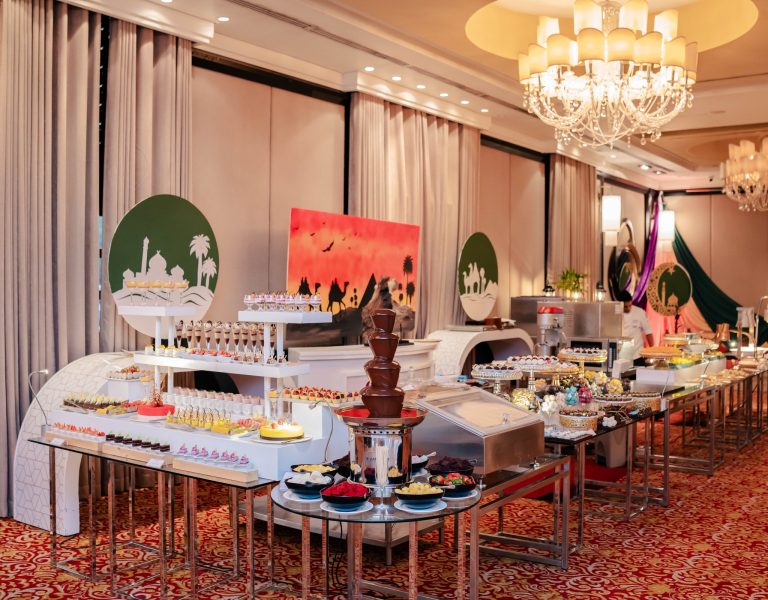Meeran Masjid (Masjid is the Arabic word for mosque) is the biggest and best known mosque in the Galle fort. We made a visit and it’s pretty beautiful on the inside, with colourful floor tiles and stained glass work.
We were told by the Imam, or the head of the mosque, that the place is about 300 years old, although refurbished only 120 years ago. Galle has a large Muslim population (especially in the Fort), to whom this mosque is quite important.

Mosques, unlike some other religious spaces are big on gender segregation, providing different prayer spaces for men and women. Some places do this in the same hall, while others divide it by floors (women on an upper floor), while a few like Meeran Masjid have a separate room altogether. This is unfortunate in this case because women miss out on the beautiful architecture and interior of the Meeran main hall – their room is elsewhere, but the ladies’ section was only built ten years ago, before which there was none, so it’s some improvement.
The idea that mosques are only male spaces is a misconception. Although men are obligated to go to mosque on Fridays, women have no obligation – however they do go, especially when they need to pray while travelling or during Ramazan when women go in large groups for late night Tarawih prayers. While some mosques have no female sections more due to cultural reasons than religious ones, many like in Wellawatte and Dematagoda and especially abroad have segregated but equal accommodation for women.
The Space
 Beautiful floor tiles of the main hall
Beautiful floor tiles of the main hallI was glad that though the prayer spaces are separated, women can still enter the main hall (the men’s section) and enjoy the gorgeous interior, if not pray there. This is an anomaly because most mosques like the Dewatagaha mosque have strict rules about segregation, so this is probably because the mosque is a tourist attraction as part of a heavily Dutch-influenced fort.

The mosque feels very roomy, with sunlight flooding through the openings of wooden windows and doors. There are different patterns of tiles in different parts of the hall, and mostly a big central space, connected to corridors like the one above. Hussain, a cleaning guy at the mosque, showed me around enthusiastically – he pointed at the tiles and said ‘Italian’, a claim we can’t be certain about but wouldn’t be surprised if it was true.

There is beautiful stained glass work in the doors and in the spaces above doors, all along the walls of the mosque.
 The Mihrab and the Mimbar
The Mihrab and the MimbarThe central room shows the Mihrab, an arch in the wall that marks the direction for prayer, and the white, carved Mimbar from where the prayer leader or Imam conducts his sermons. Just above this space are high windows, a chandelier and a loft of wooden rafters, creating a very open spacious vibe.

There’s also a little garden outside that’s very green and well maintained.

Ladies unfortunately pray here, in a room next to the mosque, completely cut out of the magic of the tiles, the windows and the ancient walls that make the mosque what it is. It’s unfortunate but better than no prayer space at all we suppose.
Conclusion

Meeran Masjid is at least three centuries old and is still very well maintained. It’s a beautiful place to visit if you’re in Galle Fort for its lovely architecture.







